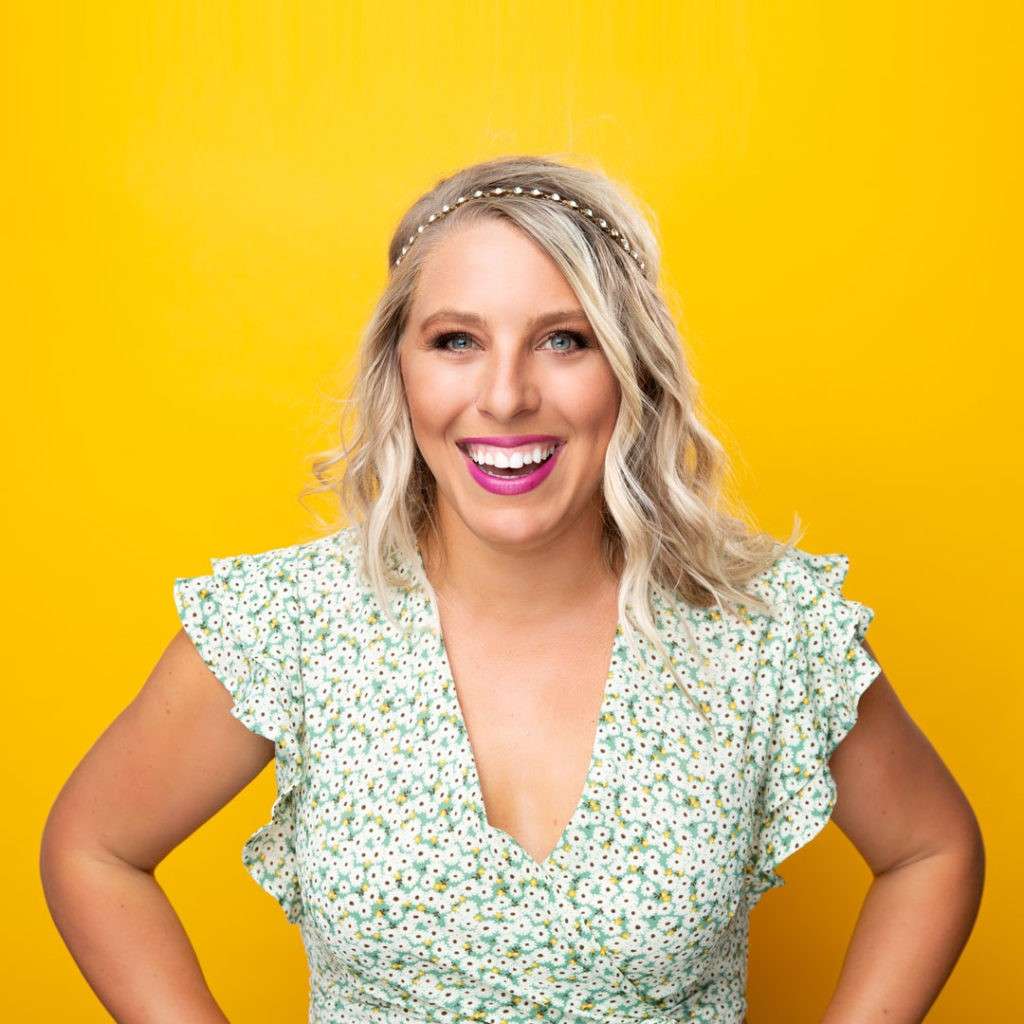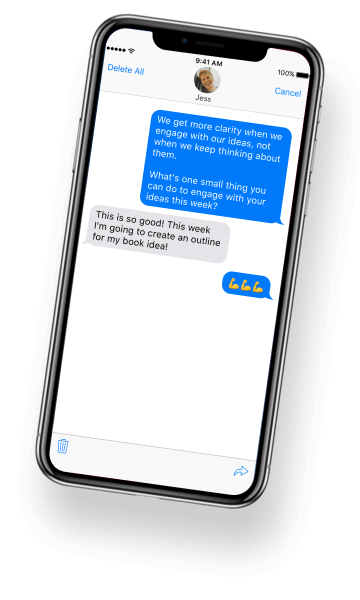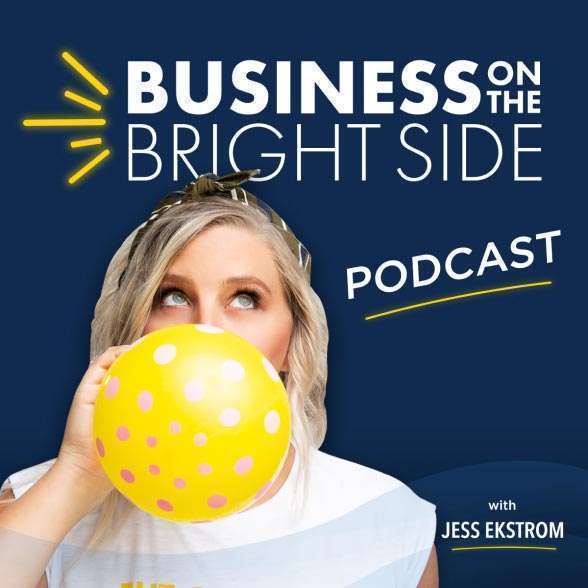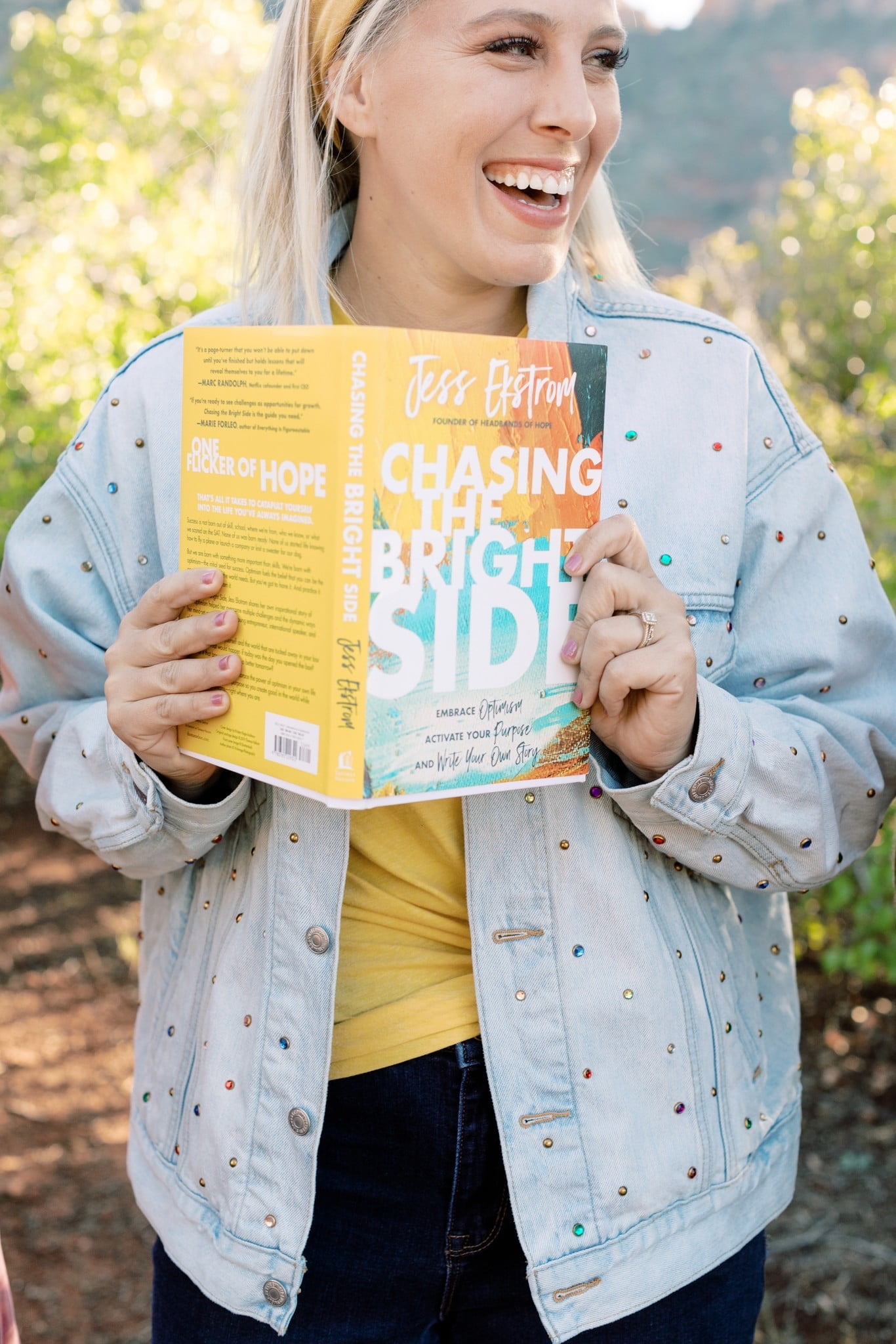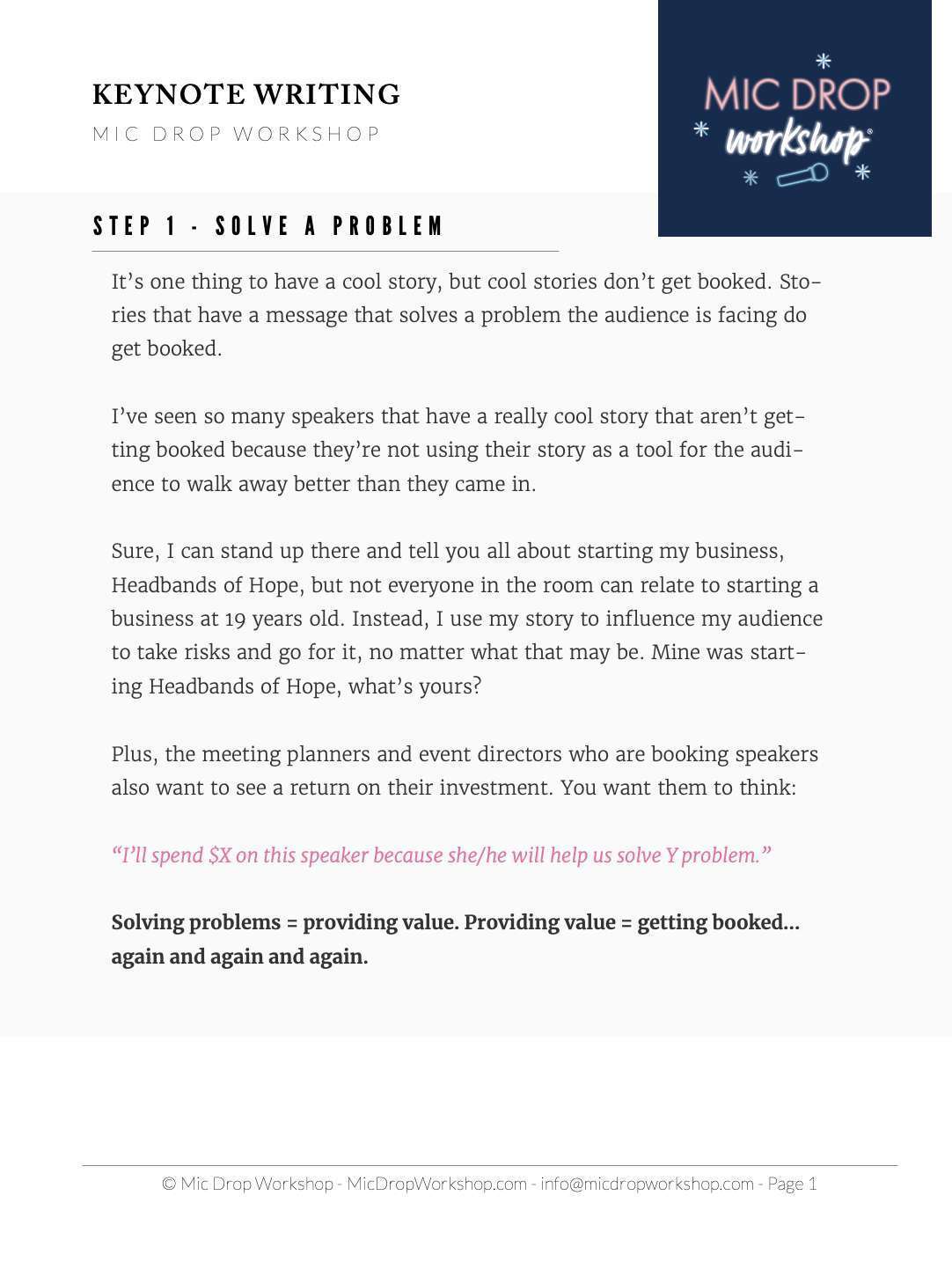SHOW NOTES:
Have you ever had a moment in your life that you look back on and thought, “Wow, that actually happened… and I made it through.”
In today’s episode of Business on the Bright Side, I’m sharing how I lost the first $10,000 I invested in my business before I ever really even started. The lessons that came from that experience didn’t sink in until much later, but it also brought out more than just lessons, it taught me about risk.
What was the risk of moving forward after failure? What’s the risk of not moving forward? What considerations or risks do you have in your next big idea or adventure?
This episode of Business on the Bright Side was recorded as part of the January 2020 You 2.0 Challenge hosted by Prompted, a guided online journal for people who do. Try Prompted today and get 20% off the annual plan with the code POD!
Getting Started with Headbands of Hope (3:12)
How Jess Lost $10,000 (7:20)
Moving Beyond the Risk (11:31)
Finding Success & Purpose After Failure (13:10)
Links:
Chasing the Bright Side
Prompted.io
Review the Transcript:
Have you ever had a moment that you look back on in your life and you’re like, “Oh, shit. That actually happened and I made it through”? Well, I’m going to tell you guys a story just like that today on the podcast. One of the reasons why I want to tell you guys this story, because trust me, it doesn’t make me shine so bright, is because it brought about this discovery of this question that came from it. It didn’t come from it immediately. It came years later as I was looking back on it.
But that question that I want you to ask yourself when you have an idea or when you’re called to do something or you’re inspired, what’s the risk of not doing this? What’s the risk of not going for it? Because you’re going to hear in this episode today about a time where I really didn’t want to keep going. I didn’t want to keep pushing forward. But the risk of not was too high. This episode was recorded during U2.0, my online journaling challenge through Bright Pages. So if you hear me referencing comments or referencing the crowd, that’s why. Now, let’s get to the episode.
What’s up, everybody. It is Jess Ekstrom and welcome to Business on the Bright Side, the podcast where you can learn how to make a living and make a difference at the same time. Life is short and so is my attention span. So let’s get started. So let’s get into today’s prompt. Again, this week we are focusing on building your personal mission statement. So each prompt that you write about this week is going to guide you towards actually putting the pen to paper on Friday and writing your personal mission statement. So today’s prompt on Bright Pages. Yesterday, I told you guys to think about the problem that you want to solve, because that’s where the real value of our work comes into play is when we show up and we create things, not from necessarily wanting to create a demand out of thin air, but wanting to solve a problem that already exists.
So today, I want to really dig our heels in the ground and understand why this is important. So take the problem that you want to solve, and then what will happen if you don’t get involved? What’s the risk? In my course, Mic Drop Workshop for Speakers, that’s one of the things that I encourage my students to put in the introduction of their talk is like, what’s the risk of not listening to you? What’s the risk of someone taking up their phone and scrolling on Twitter and not hearing what you have to say? Sometimes, as someone who’s written a book about optimism, we have to think about the best case scenario, but I think also thinking about the risk and expressing that can really help us figure out how important is this. So to do that, I’m going to tell you guys a little story that helped me realize what the risk was of not going for it.
So if you listened to my live yesterday, you heard how I started Headbands of Hope. I started this after an internship at Make-A-Wish, started from my dorm room in college. I had no idea what I was doing. I was a communication student. I mean, I had this idea to start a company, couldn’t even spell entrepreneur. It was not a lot of insight that I was pulling from to get this thing off the ground. But I started to just look at what I had. I was a college student. I was on this this campus at this university, let me start there. So I needed to learn how to start a business. So I went over to the business school and any professor that was smiling in their photo, I asked them for 15 minutes of their time. I’m like, “Okay, what are taxes? Should I be concerned about them?” Or, “How do I start an e-commerce product?”
Little by little, some of my business questions started to get answered. Then I realized I needed a logo. So I walked over to the graphic design school, went to a class that I was not in and waited for the class to get out. This is true story. I went into the classroom and I asked the professor, I was like, I introduced myself and I told her what I was up to. I was like, “You know what be a great idea is if for your next class assignment, everyone had to create me a logo for Headbands of Hope and I picked the best one. Doesn’t that sound like fun?” That was how I got my first logo for Headbands of Hope.
Then after that, I needed to build a website. Again, really couldn’t even use a Microsoft Word document. So I went to the computer design school and asked students to teach me Photoshop and Shopify. I paid them in Chipotle burritos. So that was how I got my website built. So little by little, things with Headbands of Hope started to come together, not by focusing on what I didn’t have, but just by trying to look at what was right in front of me. The last thing I had to do was I had to find someone or a way to actually make the headbands. I had the name, I had the logo, I had the website. Now I needed the actual product.
So I went on this website, I think it was called… I don’t even think it exists anymore. It was called like seams.org and it was a list of US manufacturers. I started going down the list and just emailing all these manufacturers, telling them about my idea, what I wanted to do and just hoping that someone out there would take a chance on me. In hindsight, I’m like, “I know I’m coming at you from like a .edu email address with probably like Comic Sans font or something, super embarrassing, and like 12 line signature about how I’m president of the ping pong club. Not the most professional outreach. But I was just hoping that someone would believe in this idea and want to work with me to create it.
So two months I think of absolute radio silence, I mean, no one would even get on a call with me. No one was even really responding. I started to think like, “Maybe this isn’t a good idea. Maybe this isn’t something that I should pursue in the first place if I can’t even get someone to make the headbands.” But then finally I got an email from this manufacturer in Kansas and they wanted to get on a call. I remember it was like, “This is my first business meeting.” I wrote down all these notes beforehand. I’m so excited. I’m like, “Let’s do this.” So literally after Spanish class, I found an empty classroom to have this call with this manufacturer. Got on the phone with them, told them about my idea. They loved it. They’re like, “This is beautiful. We want to help you. Let’s do it. Let’s make these headbands.”
So for about two more months, I was working with this factory and sending them some ideas. They would tell me, give me feedback on them about how I wanted the headbands to look and how I wanted them to feel. Again, shooting at the hip. I’m like, “This feels soft. Can we make this?” Finally, about two months later, they sent me a picture of a headband and I’m like, “Let’s do it. Let’s make this headband.” In hindsight, it didn’t even look that good but I think I was just so eager to get started. I’m like, “Cool. Let’s do it. Let’s make this headband.” So they sent me over the invoice and it was $10,000 to make these headbands.
I was like, “What the heck? I probably should have asked this before two months ago.” But if I’m being honest with all of you, at the time, I think I felt like I was the lesser one in this relationship and that I shouldn’t raise any flags or ask any questions or ruffle any feathers because I’m just lucky that they are choosing to work with me and I should just kind of like obey and not raise any flags. Sometimes, we can do that to ourselves. We think that we’re not qualified to be there when we think that we deserve the scraps in the kitchen or washing the dishes when really we have a seat at the table just like anyone else.
This hierarchy that we put in ourselves is only in our head and not in an actual existence, but it affects how we show up and it affects how we speak up too. So I wasn’t speaking up. I was like, “Okay, clearly, I’m new here. They’ve been doing this for years. I don’t know anything about manufacturing. Maybe this is just what it is and what it costs.” So nevertheless, I was in a bit of a pickle because this was about $9,500 more than what I had in my bank account at the time. So this was an issue. I remember I started to look up ways that you can get funding for your business. I saw that you can get an investor, give away some equity. Maybe I could get a loan from the bank. You pay interest on that.
So my dad is also an entrepreneur. I was talking to him about these two options. I’m like, “Look, I have to pay $10,000 to get these headbands made. What should I do?” He was like, “Look, I’ve seen your business plan. I’ve seen your website. I’ve seen all the work you’ve been putting into this. One of the mistakes that I made in my business was I gave away too much equity too early and I don’t want you to have to do the same thing. So I’m going to front you the $10,000 and be your first investor and we’ll work out a payment plan so you can pay me back as the business starts to return a profit.” This was like hearing my dog speak English. I mean, don’t get me wrong, I love my dad, but our childhood was never like, “Oh, you want a pony? You get a pony.” It was never that way.
But I also recognize the immense privilege financially, emotionally to have a parent that gave me that net so I could leap. So I didn’t think twice about it. I shook his hand. I was like, “Yeah. Let’s do this. I’m not going to let you down.” He wrote me the check. I ran to the bank. It was a Friday afternoon. I wanted them to get the money before the weekend because I was a business woman. Wired them $10,000. I never heard from them again. Yeah. I felt like maybe this is a sign. Maybe this is all those voices that I’ve been hearing in my head that have been telling me that I’m leaping too far or I’m not qualified to do this. Maybe this is that indicator that they’re right.
I thought maybe I could just sweep this under the rug, get a job so I can pay my dad back and pretend like this never happened. But I remember closing my eyes, going to bed a few nights later. We went to court and we tried to get it back and all this stuff. We ended up spending more money in legal fees and that’s when I learned a lot about, just a lot about legal stuff. I remember going to bed a night or two after this was happening and closing my eyes. If you’re ever like me and you run through all of your biggest life’s mistakes before you go to bed, it’s a great lullaby. But I was thinking, I’m like, “This isn’t about the embarrassment of failure. I feel like I could stomach that. This is about this itch not being scratched. This is about this need not being met. This is about this problem not being solved and that’s what I couldn’t live with.”
I could stomach a failed idea and walking away with my tail between my legs and being a little bit embarrassed. But what I couldn’t stomach is knowing that I had this idea that could make the world better and not doing it. That’s when our purpose in what we want to do comes into play. Yes, it’s like the gas in the tank when we get started. But the most important role it’s going to play is during the midst of failure and that key to our resilience. So I remember I got up a few days later, I went to the school of entrepreneurship. They were giving away $300 grants to students who were starting businesses. Mind you, I lost $10,000, but $300 was the starting point. I got $300. I bought two headbands, two types of headbands from the supplier in Bismark, North Dakota that I found on Etsy and she felt really bad for me so she let me buy really low minimums to start my business.
I put those two headbands up on my website, April 25th, 2012. Since then, we have sold almost a million headbands and we’ve donated to every single children’s hospital in the United States and 22 countries now. But one of the things that I think about when we’re standing here today with all of this success underneath our belt, last year for the pandemic, we were able to also stop production of headbands and donate 120,000 masks to healthcare workers when there was a shortage. We’ve been able to do all of these amazing things. I started to keep this file on my computer when we would get pictures and letters from kids in the hospitals, parents, healthcare staff. I would just put in this file. Any time I was feeling anxious or anytime I felt like I failed at something because I still, even though, the business is “successful” today, we still fail at things all the time, I would open up this file and look at it.
One of the most chilling thoughts is that what if I had let that one factory delete everything in this file? I literally have goosebumps right now when I say that. I look at these thousands, hundreds of thousands, almost a million kids that have gotten this simple accessory that has boosted their confidence, and I think to myself, “What if I never started? What if I let some crazy factory determine not just my fate, but the fate of the people that I wanted to help?” So imagine what would happen if it all worked out for you? Whether you have your idea of the business that you want to start, or whether you have an idea of just an impact that you want to have, what’s the best case scenario for you? What is that file on your computer that you would open years from now and be able to scroll and look at it?
Maybe it’s screenshots of DMs of people telling you that you gave them the confidence to do something. Maybe it’s people who read your book that changed their life. Maybe it’s impact reports of helping starting recycling programs, whatever it might be. What is that file on your computer that would be the best case scenario? What kind of impact is possible? Then imagine all of that going away, because you never started. Imagine none of it existing because one person, one thing, one doubt determined your future. Imagine that. In fact, the risk of going for it is a failure, it’s not starting at all.
That’s why when we think about our personal mission statement and this impact that we want to have in the world, we could think about all the things that we want to do. But I think it’s important to visualize what would happen if we didn’t. What would happen if it all worked out and then what would happen if none of that ever came to fruition? Because for me, that’s one of the scariest things of all. There was the founder of Pandora and one of his quotes was nothing is more haunting than I wish I had. That to me is way scarier than any kind of failure I’ve ever experienced in my business over the past eight or nine years having started. Remember that the problem that you want to solve doesn’t have to be big. The small things are just as important as the big things.
So whatever thing you’re writing about, whatever you’re journaling about that what you want to serve, who you want to help, remember that it doesn’t have to be solving world hunger or something massive that seems unattainable. It can just be something small, something that makes a difference for one person or for one thing or for one community. So now is not the time to put a measuring stick up to the problem that you want to solve. It’s just finding what’s important to you, what’s the risk of not going for it. to root your heels in the ground and say, “I’m going to do this.” That’s all folks, thanks so much for listening. Just as a reminder, this was a recording of U2.0, my 21 day guided online journaling challenge. Even though the challenge is over, you can still recreate it using the Bright Pages prompt pathways. Head to BrightPages.com and start journaling.

